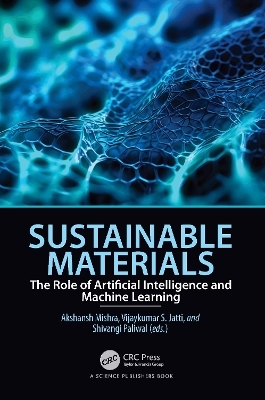
Sustainable Materials
CRC Press (Verlag)
978-1-032-56852-2 (ISBN)
The self-learning ability of machine learning algorithms makes the investigations more accurate and accommodates all the complex requirements. Development in neural codes can accommodate the data in all the forms such as numerical values as well as images. The techniques also review the sustainability, life-span, the energy consumption in production polymer, etc. This book addresses the design, characterization, and development of prediction analysis of sustainable polymer composites using machine learning algorithms.
Akshansh Mishra is pursuing a Master's in Materials Engineering and Nanotechnology at Politecnico Di Milano, Milan, Italy. He works on the application of Artificial Intelligence-based algorithms in the Manufacturing and Materials sectors. His main research interests are Cognitive Computing, Advanced Manufacturing, Explainable Artificial Intelligence (XAI), Machine Learning, Natural Language Processing, Nature-based optimization algorithms, and Composite Materials. Vijaykumar S Jatti is an Associate Professor at Symbiosis Institute of Technology, Pune, India. His main research interests are Machine Learning, Mechanical Design, Material Science, Conventional & Non-Conventional Machining Processes, Additive Manufacturing, and Bio-Materials (Metals, Ceramics and Polymers). He has several publications in WoS and Scopus indexed journals. He has received 18 awards in academics & research works. Shivangi Paliwal is pursuing a Ph.D. in Mechanical Engineering, at the University of Kentucky, USA. Before joining the University of Kentucky, she worked as a Junior Research Fellow at the Indian Institute of Technology, Mumbai, India. Her research work integrates experimental and numerical simulation techniques to leverage the potential of additive manufacturing. Her research work reviews sustainability through the use of non-traditional machining and surface engineering.
Preface. Artificial Intelligence in Material Science. Data Driven Artificial Intelligence Based Approach for the Determination of Structural Stress Distribution in ASTM D3039 Tensile Specimens of Carbon-Epoxy and Kevlar-Epoxy Based Composite Materials. Image Segmentation for Evaluating the Microstructure Features obtained from Magnesium Composites Processed through Squeeze Casting. Experimental Investigation of Bagasse Ash in Concrete Material. Computational Material Science for Cheminformatics Feature Descriptive Language (CFDL) with Categorical Data. Explicit Dynamic Crash Analysis of a Car using a Metal, Composite Material and an Alloy. Optimizing Friction Stir Spot Welded ABS Weld Strength using JAYA and Cohort Intelligence Algorithm. Supervised Machine Learning Based Classification of Dimensional Deviation of FDM 3D Printed Samples. Polymer Composite Flexural Strength Estimation using K-Nearest Neighbouring Classification Algorithm. Supervised Machine Learning Based Classification of Surface Roughness of Fused Deposition Modeling3D Printed Samples. Polymer Composite Impact Strength Estimation using K-Nearest Neighbouring Classification Algorithm. Index.
| Erscheinungsdatum | 30.08.2024 |
|---|---|
| Zusatzinfo | 23 Tables, black and white; 10 Illustrations, color; 104 Illustrations, black and white |
| Verlagsort | London |
| Sprache | englisch |
| Maße | 156 x 234 mm |
| Gewicht | 560 g |
| Themenwelt | Naturwissenschaften ► Biologie ► Ökologie / Naturschutz |
| Naturwissenschaften ► Chemie ► Technische Chemie | |
| Technik ► Elektrotechnik / Energietechnik | |
| Technik ► Maschinenbau | |
| Technik ► Umwelttechnik / Biotechnologie | |
| ISBN-10 | 1-032-56852-6 / 1032568526 |
| ISBN-13 | 978-1-032-56852-2 / 9781032568522 |
| Zustand | Neuware |
| Informationen gemäß Produktsicherheitsverordnung (GPSR) | |
| Haben Sie eine Frage zum Produkt? |
aus dem Bereich


